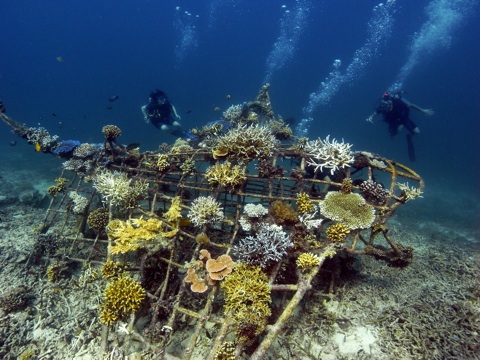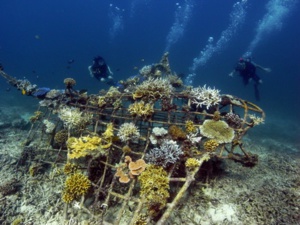The wild west was not restricted to just cow boys on their horses, the wide expanse of ocean outside the jurisdiction of countries was a lawless area. However, on the 19th of June 2015 onwards, the U.N General Assembly adopted a resolution aimed at drafting a legally binding international treaty of the high seas. It will not only govern the lawlessness of the high seas but also act for the conservation of marine biodiversity as well. This resolution came about after more than 9 years of deliberations and negotiations by an Ad Hoc Informal Working Group, which had its first meeting in 2006.
When this treaty is globally adopted, it will be the first to include measures such as access to marine genetic resources, define marine protected reserves and areas, assess the environmental impacts of human activity, provide capacity building and transfer of marine technology as well as provide access to marine genetic materials and resources.
The High Seas Alliance (HAS) has been pushing for this resolution since 2011. HAS is made up of 27 non-governmental organization which have a played a significant role and have pushed for negotiations for this proposed treaty.
The first formal round of negotiations are scheduled to take place in 2016 and will most likely continue through 2017. When asked whether the treaty will be finalized as per schedule, the Director of International Ocean Policy, Elizabeth Wilson, replied, “Not exactly, although we do expect significant progress.”
When asked how this will curb the lawless currently witnessed in the high seas, she replied, “This groundbreaking decision puts us on a path toward having a legal framework in place that will allow for the comprehensive management of ocean areas beyond national jurisdiction.”
As of now, the governance of the code of conduct in the high seas is done by a patchwork of sectorial, regional and international agreements which are rather lacking in character as well as teeth: they need to be better drafted and must be legally binding on an international scale. The new treaty will not only take care of the shortcomings of the old one, but go a step further and identify, coordinate and organize fully protected marine reserves, which will be off-limit to harmful activities. Also, it will also be legally binding.
“The high seas accounts for nearly half our planet – the half that has been left without law or protection for far too long. A global network of marine reserves is urgently needed to bring life back into the ocean – this new treaty should make that happen,” said Sofia Tsenikli from Greenpeace.
As per Wilson, legally the difference between the 1982 Law of the Sea Treaty, which was a landmark treaty of its time, and the currently proposed treaty for the high seas, is that the UN Convention on the Law of the Sea (UNCLOS), has broadened the scope of global ocean governance. The new proposed treaty sees “the need for the comprehensive global regime to better address the conservation and sustainable use of marine biological diversity in areas beyond national jurisdiction.”
The new treaty of the high seas allow for a two year preparatory period so that signatories could consider the elements that would comprise treaty beginning 2016. By 2017 this preparatory period will come to an end, and a decision for formally accepting this treaty is scheduled for 2018. This so far is the road map. Hopefully it will not have to be further extended.
References:
http://www.ipsnews.net/2015/06/u-n-takes-first-step-towards-treaty-to-curb-lawlessness-in-high-seas/
When this treaty is globally adopted, it will be the first to include measures such as access to marine genetic resources, define marine protected reserves and areas, assess the environmental impacts of human activity, provide capacity building and transfer of marine technology as well as provide access to marine genetic materials and resources.
The High Seas Alliance (HAS) has been pushing for this resolution since 2011. HAS is made up of 27 non-governmental organization which have a played a significant role and have pushed for negotiations for this proposed treaty.
The first formal round of negotiations are scheduled to take place in 2016 and will most likely continue through 2017. When asked whether the treaty will be finalized as per schedule, the Director of International Ocean Policy, Elizabeth Wilson, replied, “Not exactly, although we do expect significant progress.”
When asked how this will curb the lawless currently witnessed in the high seas, she replied, “This groundbreaking decision puts us on a path toward having a legal framework in place that will allow for the comprehensive management of ocean areas beyond national jurisdiction.”
As of now, the governance of the code of conduct in the high seas is done by a patchwork of sectorial, regional and international agreements which are rather lacking in character as well as teeth: they need to be better drafted and must be legally binding on an international scale. The new treaty will not only take care of the shortcomings of the old one, but go a step further and identify, coordinate and organize fully protected marine reserves, which will be off-limit to harmful activities. Also, it will also be legally binding.
“The high seas accounts for nearly half our planet – the half that has been left without law or protection for far too long. A global network of marine reserves is urgently needed to bring life back into the ocean – this new treaty should make that happen,” said Sofia Tsenikli from Greenpeace.
As per Wilson, legally the difference between the 1982 Law of the Sea Treaty, which was a landmark treaty of its time, and the currently proposed treaty for the high seas, is that the UN Convention on the Law of the Sea (UNCLOS), has broadened the scope of global ocean governance. The new proposed treaty sees “the need for the comprehensive global regime to better address the conservation and sustainable use of marine biological diversity in areas beyond national jurisdiction.”
The new treaty of the high seas allow for a two year preparatory period so that signatories could consider the elements that would comprise treaty beginning 2016. By 2017 this preparatory period will come to an end, and a decision for formally accepting this treaty is scheduled for 2018. This so far is the road map. Hopefully it will not have to be further extended.
References:
http://www.ipsnews.net/2015/06/u-n-takes-first-step-towards-treaty-to-curb-lawlessness-in-high-seas/


 The U.N takes steps to govern the High Seas
The U.N takes steps to govern the High Seas





 Companies
Companies